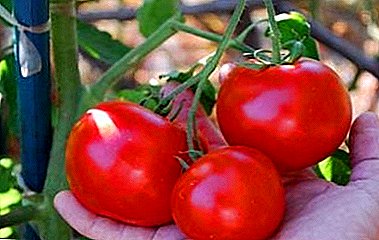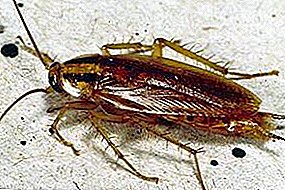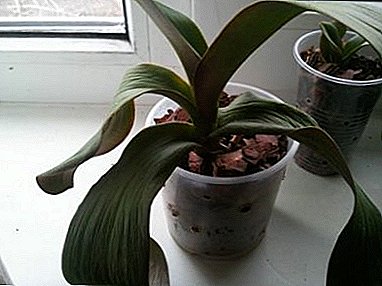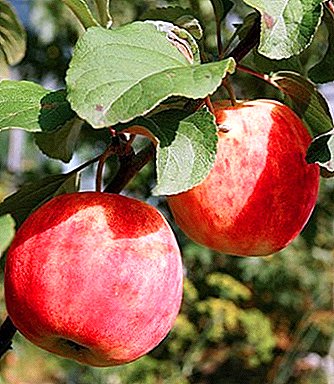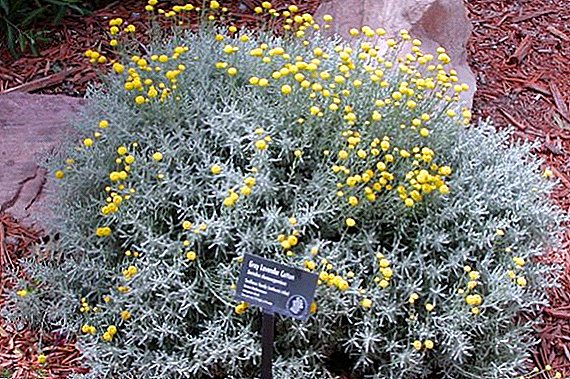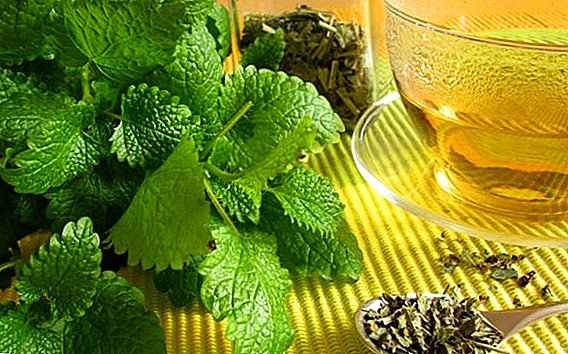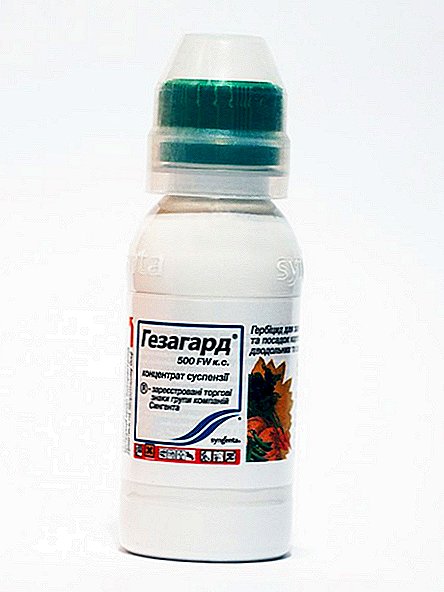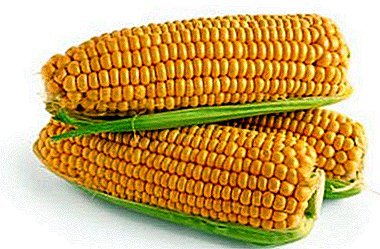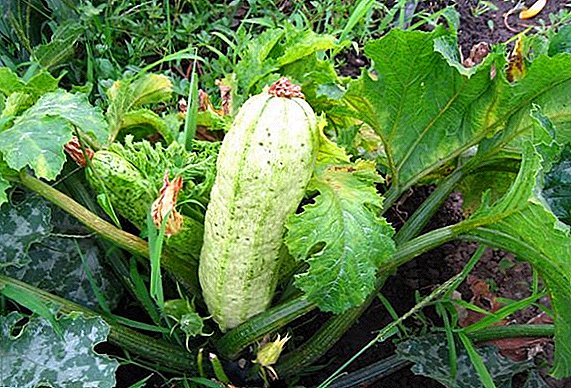 The goal of each gardener is to collect a good and healthy harvest of vegetables every year. However, unfortunately, this is not always possible to achieve - garden plants can be affected by pests and diseases, which, in turn, harm crop yields, spoil the presentation and quality of fruits.
The goal of each gardener is to collect a good and healthy harvest of vegetables every year. However, unfortunately, this is not always possible to achieve - garden plants can be affected by pests and diseases, which, in turn, harm crop yields, spoil the presentation and quality of fruits.
As a rule, the main reason why garden crops are subject to attacks by parasites, fungi, bacteria and viruses is the non-possession or neglect of the owner of the dacha plot with information about the causes of the main diseases and factors favorable for their development.  This article will discuss one of the useful and tasty vegetables - zucchini. We will tell you what actions need to be taken in order to minimize the risks of infection with zucchini diseases, the main signs of diseases and methods of their treatment.
This article will discuss one of the useful and tasty vegetables - zucchini. We will tell you what actions need to be taken in order to minimize the risks of infection with zucchini diseases, the main signs of diseases and methods of their treatment.
Did you know? Zucchini is a healthy and dietary product. Calorie zucchini is only 74 kcal per 100 g of raw vegetables and 88 kcal - fried. This vegetable culture contains vitamin C, vitamin A, folic acid, calcium, iron, magnesium, potassium.
How to deal with diseases of zucchini
The variety of ailments that can seize zucchini is very wide. Like other pumpkin plants (squash, melon, cucumber, pumpkin, watermelon), viral, fungal, and bacterial diseases can overcome it. Below you will find detailed information about the most dangerous of them and how to deal with zucchini diseases.
Anthracnose
Signs. Anthracnosis or vermilion affects all the organs of zucchini. Most often they get greenhouse and greenhouse vegetables. Less commonly, anthracnose crops that grow in the open field are affected.  The characteristic signs of this fungal zucchini disease will be oval brown spots on the leaves and dented brown patches with a pink patina on the rhizome, stems, and flowers. After some time, the fruits frown and begin to rot. And in place of spots in the leaves, holes are formed. With the defeat of the rhizomes, the plant can not be saved, so the fight against the disease must begin when the first signs are found.
The characteristic signs of this fungal zucchini disease will be oval brown spots on the leaves and dented brown patches with a pink patina on the rhizome, stems, and flowers. After some time, the fruits frown and begin to rot. And in place of spots in the leaves, holes are formed. With the defeat of the rhizomes, the plant can not be saved, so the fight against the disease must begin when the first signs are found.
Favorable factors for the development of the disease:
- watering in the heat;
- high humidity of air and soil;
- poor cleaning of post-harvest residues.
Control measures. In order to prevent this disease, the garden plot should be cleaned in a timely and thorough manner in the autumn. An important component of the struggle will be the destruction of weeds. Squashes need moderate watering and periodic weeding.
Since the disease can be transmitted through seeds, it is necessary to carefully select seedlings before planting in the ground. You can process the seeds of a 0.2% solution of boron, copper and manganese.  Also, do not neglect the rules of crop rotation. Squashes are not planted on the place where pumpkin vegetables were grown last season, as related crops afflict the same diseases, the causative agents of which can persist in the soil for several years. In one place, the zucchini is desirable to sow once every three to four years.
Also, do not neglect the rules of crop rotation. Squashes are not planted on the place where pumpkin vegetables were grown last season, as related crops afflict the same diseases, the causative agents of which can persist in the soil for several years. In one place, the zucchini is desirable to sow once every three to four years.
Important! Ignoring the rules of crop rotation and planting crops on the same place for several years provokes depletion of the soil, disruption of the balance of micro and macronutrients in it, the invasion of parasites, the development of pathogenic bacteria and fungi. All these factors ultimately lead to a significant decrease in yield.
Zucchini leaves are watered with biological products for zucchini and other pumpkin ("Fitosporin", etc.) at intervals of two weeks.
If the infection occurred in the greenhouse, then after harvesting it is necessary to disinfect it with bleach (200 g / 10 l of water). For the primary signs of illness, plants are sprayed with Bordeaux mixture (100 g of copper sulphate / 100 g of lime / 10 l of water), 35% paste of colloidal sulfur (40-100 g / 10 l of water), 04% solution of polycarbide. With mass infection, squash is destroyed.
Bacteriosis
Signs. Perhaps one of the biggest dangers to zucchini and all pumpkin seeds is bacteriosis. It is worth bothering with the appearance of brown spots on the leaves of zucchini. This is one of the first signs of bacteriosis infection. Subsequently, near the veins of the leaves are formed holes.  Fruits are covered with brown ulcers, deformed. The pathogen is transferred by insects, seeds, water droplets, plant residues. As a result of infection by bacteriosis in the zucchini fruits deteriorate, the yield is sharply reduced.
Fruits are covered with brown ulcers, deformed. The pathogen is transferred by insects, seeds, water droplets, plant residues. As a result of infection by bacteriosis in the zucchini fruits deteriorate, the yield is sharply reduced.
Favorable factors for the development of the disease:
- sudden changes in temperature day and night;
- high soil and air humidity;
- non-disinfected seeds;
- a garden not properly harvested in the post-harvest period.
Important! The main method of preventing diseases will be to prevent the favorable factors for their development..
Control measures. To avoid bacteriosis in zucchini, it is necessary to carry out prevention of the disease, namely:
- disinfect seeds (0.02% zinc sulphate solution);
- remove plant residues;
- follow the rules of fruit change;
- to carry out preventive spraying with 1% Bordeaux liquid or 0.4% solution of copper oxychloride.
 Infected plants and fruits must be destroyed. To avoid the development of the disease, treatment with 1% Bordeaux liquid is shown.
Infected plants and fruits must be destroyed. To avoid the development of the disease, treatment with 1% Bordeaux liquid is shown.Important! Spraying Bordeaux liquid must be stopped at least 15 days before harvesting.
White rot (sclerotinia)
Signs. When infected with white rot, the petioles of leaves and fruits, the stems and roots of zucchini are covered with a dense white flaky coating. Later, black spores of the fungus pathogen become noticeable on it. Infected parts are made soft and slippery, wither and die. As a result, zucchini fruit badly.  Favorable factors for the development of the disease:
Favorable factors for the development of the disease:
- low temperatures with high humidity of air and soil;
- thickened garden;
- non-compliance during planting recommendations for crop rotation;
- oversupply of nitrogen supplements.
Control measures. At the initial stage, the development of white rot helps to stop dusting of diseased areas of the stem with a mixture of copper sulfate and chalk in a 1: 1 ratio. In order to prevent the spread of infection and dry the affected areas, you can resort to dusting with crushed coal.  If the infection occurred in the greenhouse, in order to avoid its mass distribution, it is necessary to reduce the humidity and conduct regular airing. Watering plants is only warm water.
If the infection occurred in the greenhouse, in order to avoid its mass distribution, it is necessary to reduce the humidity and conduct regular airing. Watering plants is only warm water.
Recommended foliar feeding (1 g of zinc sulfate, 2 g of copper sulphate and 10 g of urea per 10 liters of water). Sick fruits and plants must be disposed of.
Gray Rot (Botrytis)
Signs. This fungal disease is characteristic of young plants, it damages their leaves and ovaries. As a result, they become wet, turn brown and become covered with gray bloom.  Favorable factors for the development of the disease:
Favorable factors for the development of the disease:
- sudden changes in temperature;
- waterlogging;
- insufficient soil moisture;
- soil moisture at a later time of day;
- watering with cold water;
- excess nitrogen.
Control measures. The methods of dealing with gray rot include the timely removal of weeds and plant residues, compliance with agrotechnical rules, fertilization with phosphate and foliar dressings, inspection of zucchini every 10 days. Upon detection of diseased ovaries and leaves, they must be destroyed. To deter the development of the disease, dusting with copper sulfate (2: 1) is recommended.
You can get rid of weeds with the help of herbicides. If you are against chemical processing methods, then use folk remedies or a special tool to remove weeds.
Radical rot
Signs. A characteristic sign of root rot can serve as constriction on the roots. The roots, root collar and stems turn brown, then rot, the lower leaves turn yellow. Sick zucchini stand out among others in the garden - their fruits are smaller, the leaves are smaller, of a yellowish tint. The ovaries and fruits of these plants fall. In the end, comes the death of culture.  Favorable factors for the development of the disease:
Favorable factors for the development of the disease:
- temperature difference;
- weakened cultures;
- watering with cold water (below 20 ° C);
- littered beds;
- excessive fertilizing.
Control measures. For the prevention of root rot do not allow the above factors and apply foliar dressing. When signs of disease are found, it is necessary to pour the soil to the stem in order to form new roots. Spraying with copper preparations from root rot zucchini is used. Infected plants are destroyed by burning. The areas where they grew up are treated with blue vitriol.
Mealy dew
Signs. This is a common fungal disease in many plants and reaches the pumpkin, including zucchini. It affects mainly the leaves, but can be observed on the stems and on the petioles. When infected with powdery mildew, white spots are formed on the leaves of zucchini. Over time, the spots increase, forming a single whole, the leaf fades.
Favorable factors for the development of the disease:
- excess moisture;
- excessive feeding with nitrogen;
- not properly cleaned soil in autumn.
 Control measures. Processing squash from this disease is carried out with gray colloid (in the garden: 20 g / 10 l of water; in the greenhouse: 40 g / 10 l of water); gray ground (300 g / 100 sq. m); sodium phosphate disubstituted (50 g / 10 l of water); isophene.
Control measures. Processing squash from this disease is carried out with gray colloid (in the garden: 20 g / 10 l of water; in the greenhouse: 40 g / 10 l of water); gray ground (300 g / 100 sq. m); sodium phosphate disubstituted (50 g / 10 l of water); isophene.With a slight spread of powdery mildew, they also cauterize leaflets with ground sulfur and process mullew infusion (1 kg / 3 l of water, insist for three days, strain, dilute 1 l / 3 l of water). Also used fungicides for zucchini: "Topsin", "Bayleton".
Downy mildew (perinospora)
Signs. Downy mildew spreads on the leaves — small, oily spots with a yellow tint first appear. On the lower part of the leaf plate appears gray patina, where the fungus-pathogen lives. As the disease spreads the leaves turn brown, the affected areas fall out. With a strong defeat the foliage on the culture completely dies. As a result, a violation of plant photosynthesis occurs.  Favorable factors for the development of the disease.
Favorable factors for the development of the disease.
- frequent dew;
- heavy fogs;
- high humidity in greenhouses and greenhouses;
- untidy post-harvest residues.
Control measures. In order to prevent peronosporosis in the garden, it is necessary to disinfect the seeds before planting, follow the rules of agricultural engineering, fertilize zucchini with mineral and organic dressings. Use of foliar dressing solution of nitroammofoski with zinc, boron, molybdenum.
At the initial stage of the lesion, you can resort to treatment with potassium permanganate (2 g / 10 l of water). It is also recommended treatment with biologics and fungicides with potassium fertilizer fertilizing. Treatments with chlorine dioxide, Bordeaux liquids and Topaz and Oxy products have proven themselves well.  For the treatment of heavily infected zucchini, spraying with fungicides according to the following scheme is used: systemic fungicide - 10 days interval - contact fungicide - 5 days interval - systemic fungicide - 10 days interval - contact fungicide, etc.
For the treatment of heavily infected zucchini, spraying with fungicides according to the following scheme is used: systemic fungicide - 10 days interval - contact fungicide - 5 days interval - systemic fungicide - 10 days interval - contact fungicide, etc.
Black mold pumpkin
Signs. Round or angular spots of brown color with a yellow tint on the leaves of zucchini are characteristic evidence of plant infection with a fungal disease of black mold pumpkin. Over time, a gray plaque is formed on the infected leaves, containing spores of the pathogenic fungus.
Favorable factors for the development of the disease:
- excessive thickening of the beds;
- crop failure;
- plant residues left in the garden before winter.

Fusarium wilt
Signs. Fusarium wilt is the most harmful fungal disease that affects the vascular system of the plant, which leads to its complete death down to the roots.
The first symptoms are the fast wilting of the foliage and stems.
Favorable factors for the development of the disease:
- soil overgrown with weeds;
- uncleaned plant residues;
- wrong agrotechnology and crop rotation.
 Control measures. The fight against fusarium withering involves the elimination of factors contributing to the development of this disease. When infecting in the greenhouse will require a complete replacement of the soil. Also, all infected plants are subject to destruction along with a clod of soil.
Control measures. The fight against fusarium withering involves the elimination of factors contributing to the development of this disease. When infecting in the greenhouse will require a complete replacement of the soil. Also, all infected plants are subject to destruction along with a clod of soil.In addition to these diseases, zucchini is also susceptible to viral infections - mosaic, as well as brown spot, ascochytosis, etc.
Did you know? Since zucchini is characterized by low calorie content and the absence of starch in the composition, they are advised for introduction into the diet of people who require a dietary diet. In addition, their regular use can reduce cholesterol levels, blood pressure, has a positive effect on the cardiovascular system, and helps maintain vision.
How to deal with pest zucchini
Squashes are attacked as pests of pumpkin plants, and those parasites that attack other crops.
Gourd Aphid
Signs. If suddenly the leaves on your zucchini began to turn yellow, curl and dry, try to look under the bottom of the leaf plate. In the case of finding there clusters of small (1.25-2 mm) insects of dark green color, you know, your garden attacked melon aphid. In addition to leaves, aphids cause harm to the shoots and ovaries - it sucks the juice out of them. After the parasite has been infected, these parts of zucchini shrivel, the plant stops growing and dies.  Control measures. As aphid begins to grow in weeds, squash beds should be weeded regularly. It is impossible to ignore the fallen leaves or ovaries - they must be promptly removed. When detecting melon aphid should be spraying the drugs "Intravir", "Spark", "Decis".
Control measures. As aphid begins to grow in weeds, squash beds should be weeded regularly. It is impossible to ignore the fallen leaves or ovaries - they must be promptly removed. When detecting melon aphid should be spraying the drugs "Intravir", "Spark", "Decis".
You can use solutions of karbofos, wipe the leaves with a soap solution (100 g / 10 l of water). Sparing folk methods are also used: treatment of tobacco infusions (1:10 water, insist day, dilute 1: 3) and yarrow (1 kg of dried leaves / 10 hot water, insist two days).  Planting in close proximity to the vegetable squash, which repel aphids, such as garlic, mustard, basil, marigolds, peppermint, etc., also helps.
Planting in close proximity to the vegetable squash, which repel aphids, such as garlic, mustard, basil, marigolds, peppermint, etc., also helps.
White fly
Signs. The whitefly is a small white flying insect that feeds on plant sap. Her favorite habitats are greenhouses and dense vegetable gardens. With the defeat of this pest on the upper part of the leaf is formed honeydew or pad, and under the lower part the whitefly themselves like to sit and their larvae are. This insect is dangerous first of all because in places it struck, a black fungus or other pathogens can later settle.  Control measures. To destroy this scourge, other insects are infested in greenhouses - for example, enkarzia or macrolofus bug. The natural enemies of the whitefly in open areas are ladybugs.
Control measures. To destroy this scourge, other insects are infested in greenhouses - for example, enkarzia or macrolofus bug. The natural enemies of the whitefly in open areas are ladybugs.
Among the sparing methods of struggle we can recommend the use of glue traps for catching insects and spraying with herbal infusions. They also resort to the use of insecticides: "Aktellika", "Konfidora", "Fufanona", "Pegasus", etc.
Spider mite
Signs. Ticks also like to stick to the bottom of the sheets. These are miniature (0.3-0.4 mm) insects of dark brown, brown, green color. In places of defeat by this pest light yellow dots are formed. Later, completely devoid of juice leaves dries.  The whole plant in the attack of ticks is covered with cobwebs. It begins to lag behind in growth, loses in productivity and it decreases the level of resistance to low temperatures. Particularly strongly pest spreads in hot and dry pores.
The whole plant in the attack of ticks is covered with cobwebs. It begins to lag behind in growth, loses in productivity and it decreases the level of resistance to low temperatures. Particularly strongly pest spreads in hot and dry pores.
Control measures. By following the rules of agricultural technology, you can reduce the risk of tick settling in your garden. When they appear, a treatment with a decoction of garlic leaves, infusions of onion peel, and potato tops is recommended.
Chemical treatment can be done both for prophylaxis during bud break (Acartan, Karbofos, Metaphos, Phosphamide, etc.) and for treatment.
Sprout fly
Signs. Sprout fly refers to pests that damage the shoots of zucchini and many other plants. This is a small (3-5 mm) gray insect. In order to postpone the larvae, appears in the spring. After laying the eggs, the larvae appear in 2-10 days, and after two weeks they go for pupation. Hibernate in the soil. Severely harm sprouting seeds and seedlings.  Control measures. The methods of control include the destruction of weeds and post-harvest residues, deep digging of soil.
Control measures. The methods of control include the destruction of weeds and post-harvest residues, deep digging of soil.
Slugs
Signs. Slugs eat zucchini leaves, stems, flowers and harm fruits. By their actions, they lead to lower yields and damage to the presentation of vegetables. In addition, slugs contribute to the infection of plants with diseases.
Control measures. Planting garlic, mustard, bitter pepper, lavender, sage in the neighborhood - they should scare away the slugs.
Apply mechanical collection of parasites, use special traps for slugs. Biological preparations are possible irrigation Phasmarhabditis hermaphrodit.  The use of chemical treatment against slugs is an extreme measure. To do this, use a 5% granular preparation of metaldehyde, copper sulfate, ground superphosphate.
The use of chemical treatment against slugs is an extreme measure. To do this, use a 5% granular preparation of metaldehyde, copper sulfate, ground superphosphate.
Hopefully, after reading this material, you will no longer have questions like, why the leaves turn out at the zucchini or what the white bloom on the fruit means. Armed with information about the symptoms of diseases, methods of prevention and control of them, you will be able to save the harvest of zucchini in time and prevent the parasites from spreading to other crops growing on your site.


